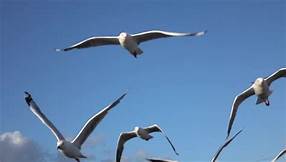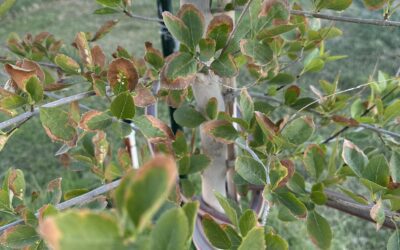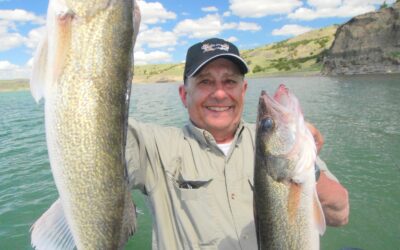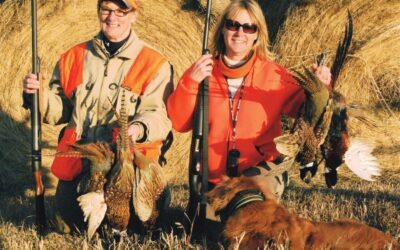If you are reading, a fishing publications or watching some fishing show where structure isn’t brought up, you can bet if you locate the structure in a body of water, you’re going to find the fish related to it
How do we define structure, structure is any identifiable object, break, or change in underwater terrain that holds and attracts fish. Areas with structure include; points, drop-offs, rock piles, sunken islands, gravel beds, weed beds, submerged timber, stumps, logs and numerous other locations, or spots which involve a change in depth or bottom content and may be huge while others are minuscule.
Fish are mainly bottom relating creatures that relates to structure, because this is where the baitfish is. The fish use edges and contours of structure to travel, hunt, hide and ambush prey.
Those fish spend the their non-feeding time suspended in deep water close to these feeding areas, structure, locations which hold the better part of the catchable fish.
If there is structure, no matter what size or type you find on a given body of water, you can bet that some sort of aquatic life exists in that area.
Now that we know, the fish we’re looking for may be relating to some structure in the lake, all you need to do is to locate the right piece of structure.
In order to understand it better, let’s put it in above water terms; pretend that an open pasture is your body of water with a rock pile in one corner, a large tree in the middle and a small clump of plum brush in another corner.
If nges or features and they’ll be drawn to it.
These changes if they were under water are structure with bottom structure attracting all aquatic creatures.
This change doesn’t need to be huge, as I’ve caught walleyes relating to a slight depression on the bottom or areas where the bottom content changes from a soft mud bottom to hard gravel.
It could be a weedbed, rock pile, humps, points, the old river channel or submerged timber. It doesn’t have to be a drastic change; it just needs to be something different.
When I’m on the water, I prefer to begin fishing shallow and then work out to the deeper contours to locate fish by paying close attention to changes in depth, the bottom and bottom structure. In stained colored water, I go shallower, especially during low light periods; dawn, dusk, when it’s overcast or when the wind blows, rippling the water surface, cutting the light penetration.
You’ll also want to keep an eye out for large numbers of seagulls and terns working the surface as they are excellent indicators that the baitfish fish being driven up by the predator fish below.
Just how important is structure to fish, studies made show how fish relate to structure and how much is needed in order for the fish to be attracted to one particular area.
In these studies, fish were placed in large round stock tanks with no structure, where everything on the bottom was the same, which gave the fish nothing to relate to and they wandered all over the bottom of the tank.
When anything was placed in the tank, rock etc., something different, creating structure, the fish moved right into it.
The last part of this test really puts it into perspective. They painted black circle (structure) on the bottom of the tank, with the fish moving in and around the circle, which proved that even the slightest change in the bottom configuration or structure can and does attract fish.
What draws these fish to these areas is simple; structure gives the fish everything they need.
(1) Food Source
Because food is the main concern of all fish, number one on the list, with the fish’s existence dependent on their getting enough food to survive. The structure creates an aquatic food chain that begins and ends in some instances. It attracts the smallest microorganisms, minnows and baitfish that feed on the structure’s zooplankton and the larger game fish that feed in and around this structure.
(2) Comfortable Water Temps
Comfort is number two on the list, with each individual species of fish having their own comfort zones, certain bottom types, water temperatures, light conditions, depth and cover. An area with a clean, hard bottom, firm sand, rock, gravel or weed beds is considered a good fishing habitat, fishing locations. Try to avoid areas with mud and silt as they are generally barren, void of fish. Because fish, especially walleyes avoid sunlight, you want to spend some time looking for deep, darker water on bright calm days when the sunlight penetrates deeper.
Other areas that provide comfortable temperatures for fish include shaded areas of weeds, submerged stumps, timber, sunken logs and docks. Fish have a tendency to locate in areas just below the point of the sun’s penetration.
(3) Safety-Security
Number three on the list is safety-security, areas that have depth or heavy cover (structure) near the fish’s feeding area. Fish cover a lot off area including areas of deep water, weeds and underwater obstructions to escape predators and avoid becoming another fish’s meal.
Because all fish have a schooling instinct, once you’ve caught a fish, mark the location, and work it over thoroughly.
(4) It doesn’t take much of a change
Once you’ve found the three areas listed above, don’t get hung up looking for a huge change in bottom configuration as, I’ve found walleyes lying in shallow muddied water during the heat of the day next to the only structure on that stretch of the river. It was an 8″ deep depression running from the shore out into the deeper water. This foot wide trench was created when a heavy rain came off an adjacent road, cutting a small depression in the shallows.
That depression had attracted shiners, which had followed the zooplankton that was blown into the shoreline; these shiners were using the depression to hide from the game fish. When one made the mistake of poking his head out of the trench, a walleye was there to make sure that it didn’t get a chance to make that mistake again.
We also ran into a similar situation on recent trips to the northeastern South Dakota, the Glacial Lakes area. The only real structure in the lake that we could find were flooded trees, not exactly what most people would consider prime walleye structure.
Why were the fish there, as there were several reasons why these trees coming up out of the water made this ideal walleye habitat or structure.
A brisk 25 MPH wind was blowing hard into the trees and had blown zooplankton in along the shoreline, which brought the baitfish into the area.
The wind blowing into the shoreline where the submerged trees were standing had created a “magnum” mud line.
Mud lines are created when waves crash into the shoreline. As they move back away from the shore, they carry sediment out into the water.
This muddied water cut the suns penetration, giving the light sensitive walleyes the opportunity to move shallow into the flooded trees which now has became ideal structure attracting not only walleyes, but all species of predator fish.
We tried several different methods to fish the area using heavier Firetiger colored lip less crankbaits, often referred to as a bass crankbait finding that casting the bait in and around the trees worked best.
Some anglers think that only one particular structure is holding all the fish in the lake and that area is the only place where the fish are biting.
When in fact, there are probably dozens of other areas on the lake, areas where the same scenario is being played out.
If you find some type of structure that’s holding fish and don’t want to fight the crowds. Take the information you’ve learn from that area and search for other structures that’s similar as you can bet once you locate a similar area, there will be fish biting there also.
If the crowd is trolling crankbaits along a muddied up rocky shoreline with a 56 degree surface temperature with rocks extending out from the shore line into 5 to 6’ foot of water, you should be able to take this information and head to another area with similar structure to see if you can find your own hot spot.
Not all structure in the lake will hold fish at the same time, but unless something changes drastically, every year when conditions are about the same, you’ll be able to catch fish over certain types of structure.
It’s not rocket science, it all has to do with the wind, water temps and water clarity.
On calm sunny days, in a clear water lake all aquatic life will relate to deeper structure to avoid the direct sunlight.
Of course the exception to this is if the wind is blowing hard as you’ll want to fish the structure on the windy side as the food chain will be forced to follow their food and the mud line created allows the predator fish to move shallow to feed.
If you’re fishing dirty or turbid water, you may be able to fish the shallow structure throughout the day until shallow water temperatures become too warm.
Don’t overlook even the slightest piece of structure as a small change in the bottom contour can hold some truly big surprises.
Gary Howey, originally from Watertown, S.D., now residing in Hartington, Neb. is a former tournament angler, fishing & hunting guide, an award winning writer, producer, photographer and broadcaster, a recent inductee into the “National Freshwater Fishing Hall of Fame” in 2017. Howey is also the Producer-Co-Host of the Outdoorsmen Adventures television series and Outdoor Adventures radio. If you are looking for more outdoor information, check out garyhoweysoutdoors.com, outdoorsmenadventures.com and like Gary Howey’s Facebook or watch his shows on www.MyOutdoorTV.com






0 Comments